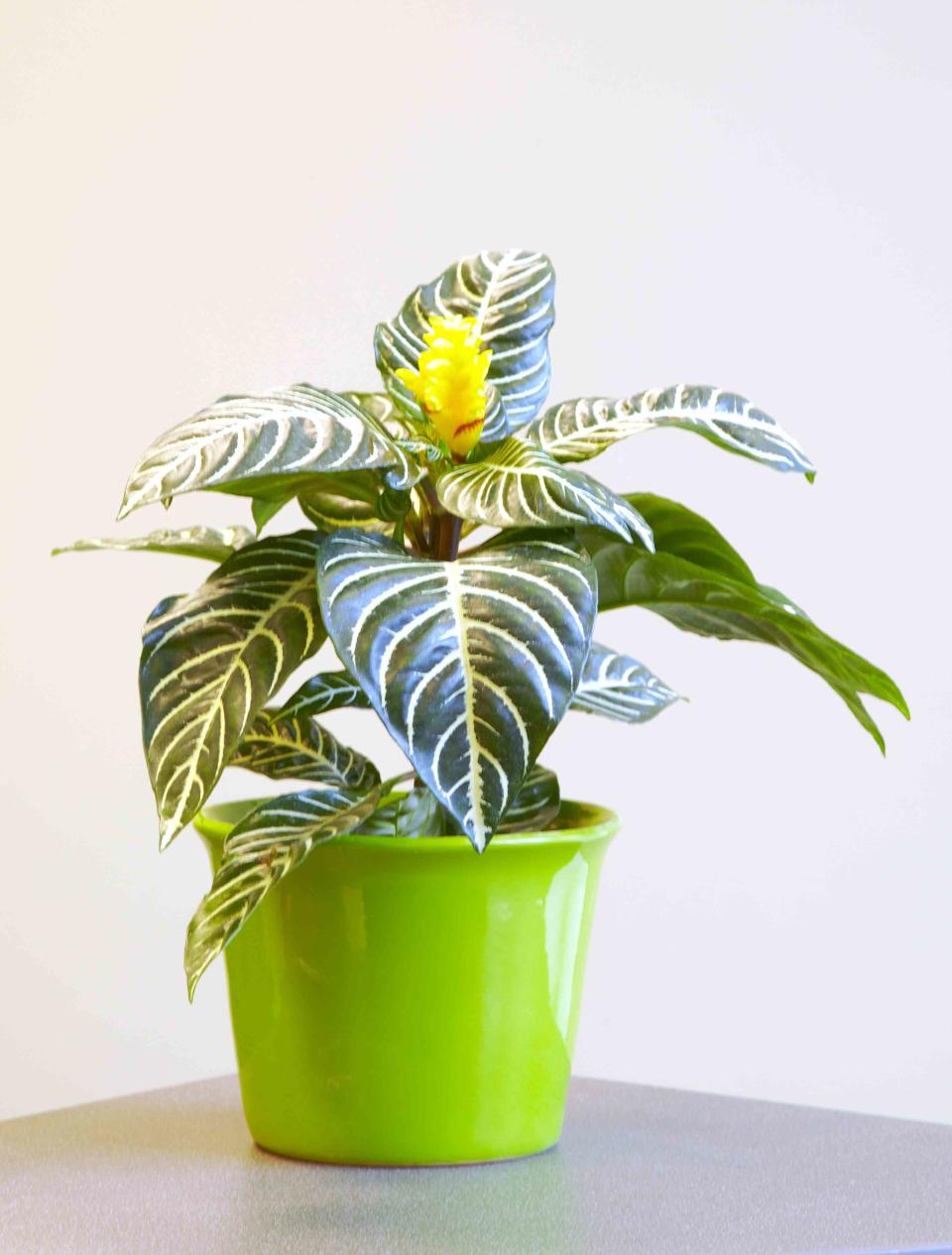How to Grow and Care for Zebra Plants
This striking houseplant will add a bold splash of color to your home.

Dean Schoeppner
One look at the bold white stripes on a zebra plant (Aphelandra squarrosa) will tell you how it got its name. In addition to their striking striped leaves, these beautiful plants are sure to attract attention with their lush tropical look. When in bloom, these South American natives produce beautiful yellow flower spikes that can last for weeks. Zebra plants are usually grown as houseplants, but in warmer regions, they'll grow outdoors where their flowers attract hummingbirds and butterflies.
Where to Grow Zebra Plants
In warmer parts of the country such as Florida and Southern California, zebra plants can be planted outdoors in gardens or containers. But in most of the United States, zebra plants should be kept as indoor plants. As tropical plants, they do especially well in sunrooms (out of direct sun), bathrooms, and kitchens where humidity tends to remain somewhat higher than the rest of the house. Keep them in a location away from drafts and fans and in a bright location with indirect light.
Care Tips for Zebra Plants
Although they can be somewhat finicky to grow, zebra plants can thrive in most homes with a little basic attention to their needs.
Light
Bright, indirect light is required for these plants to thrive and bloom. East-facing and north-facing windows are usually best if the light is unobstructed by plants, buildings, and other structures. South-facing windows work well if plants are kept out of the direct sun.
Plants kept in too little light will become leggy and stretched out, while plants kept in too much light will bleach out or even burn. Once you find the right location for your zebra plant, try to move it as little as possible.
Soil and Water
Zebra plants prefer organically rich, well-draining soil that retains moisture without becoming waterlogged. Keep the plant in a plastic pot with holes in the bottom for proper drainage, and place it inside a decorative pot without drainage. Remove your potted zebra plant from the decorative pot when it's time to water. Add water until it drains out the bottom, then place it back inside the decorative pot once it stops dripping.
:
Temperature and Humidity
Zebra plant needs warm temperatures for proper growth. Fortunately, their preferred temperatures are about the temperature range of most American homes, from the mid-60s to the mid-70s. High humidity is not necessary can be beneficial for the best growth. Kitchens and bathrooms tend to have higher humidity levels than other areas around the house, which can help improve plant health.
Fertilizer
Fertilizer is necessary for most potted plants due to the leaching of nutrients from soils, and zebra plants are no exception. Feed your plants with a general-purpose water-soluble fertilizer once a month while plants are actively growing and blooming.
Pruning
Pruning zebra plants is generally not necessary, but spent flowers can be cut off to help plants redirect nutrients and energy into new growth. Allow leaves to naturally fall off the plant rather than cut them off. Plants naturally re-absorb and divert nutrients from older leaves prior to dropping them and removing them prior to this can sap nutrients from the plant and hinder further growth.
Potting and Repotting
As houseplants, zebra plants can be repotted any time of year. Plants should be moved into the next-size larger pot when roots begin to push against the pot and/or come out the bottom of the pot. For example, a plant in 4-inch pot should be transplanted into a 6-inch pot.
Pests and Problems
Zebra plant is susceptible to a variety of pests such as mealybugs, scale, and aphids. If plants become infected, treat them with an organic pesticide such as neem oil or insecticidal soap. Scale insects may require manual removal by using either your fingernail or a cotton bud soaked in rubbing alcohol to separate them from the leaves.
Because of their need for constant moisture, zebra plants are often overwatered and get root rot. If root rot happens, take stem cuttings and propagate them to create new plants. Discard the infected root ball and thoroughly clean the pot before reusing it.
How to Propagate Zebra Plant
Zebra plants are relatively easy to propagate by cuttings following these steps:
Cut stems into 3-6 inch portions and remove all but one leaf per cutting. Mark the bottom of each section with a marker to avoid confusion.
Apply a powdered rooting hormone to the bottom inch of each cutting.
Fill small pots with a mixture of moist 50% peat moss and 50% perlite.
Make a holes with your finger in the soil, deep enough to place about half of each stem section into the pot.
Place planted cuttings in a bright location with high humidity. Spray and water regularly to maintain moisture. Using a warming mat under the cuttings can help to speed up the process and reduce the risk of rot developing.
Companion Plants for Zebra Plant
Zebra plants grow well when planted with other tropical houseplants, but care should be taken to choose companion plants that prefer the same level of moisture and will not overpower them. Good companion plants are pothos (Pothos spp.), peace lily (Spathiphyllum spp.), and Korean rock fern (Polystichum tsus-simense)
Frequently Asked Questions
Are zebra plants poisonous?
<p>No, zebra plants are not poisonous, but their sap can be an irritant for some people.</p>
How fast do zebra plants grow?
<p>Zebra plant is somewhat slow-growing but it will eventually top out at about two feet tall over time.<br/></p>
How often do zebra plants bloom?
<p>Zebra plants are slow-growing and do not bloom annually. Give your plants plenty of time to mature and eventually bloom.<br/></p>

